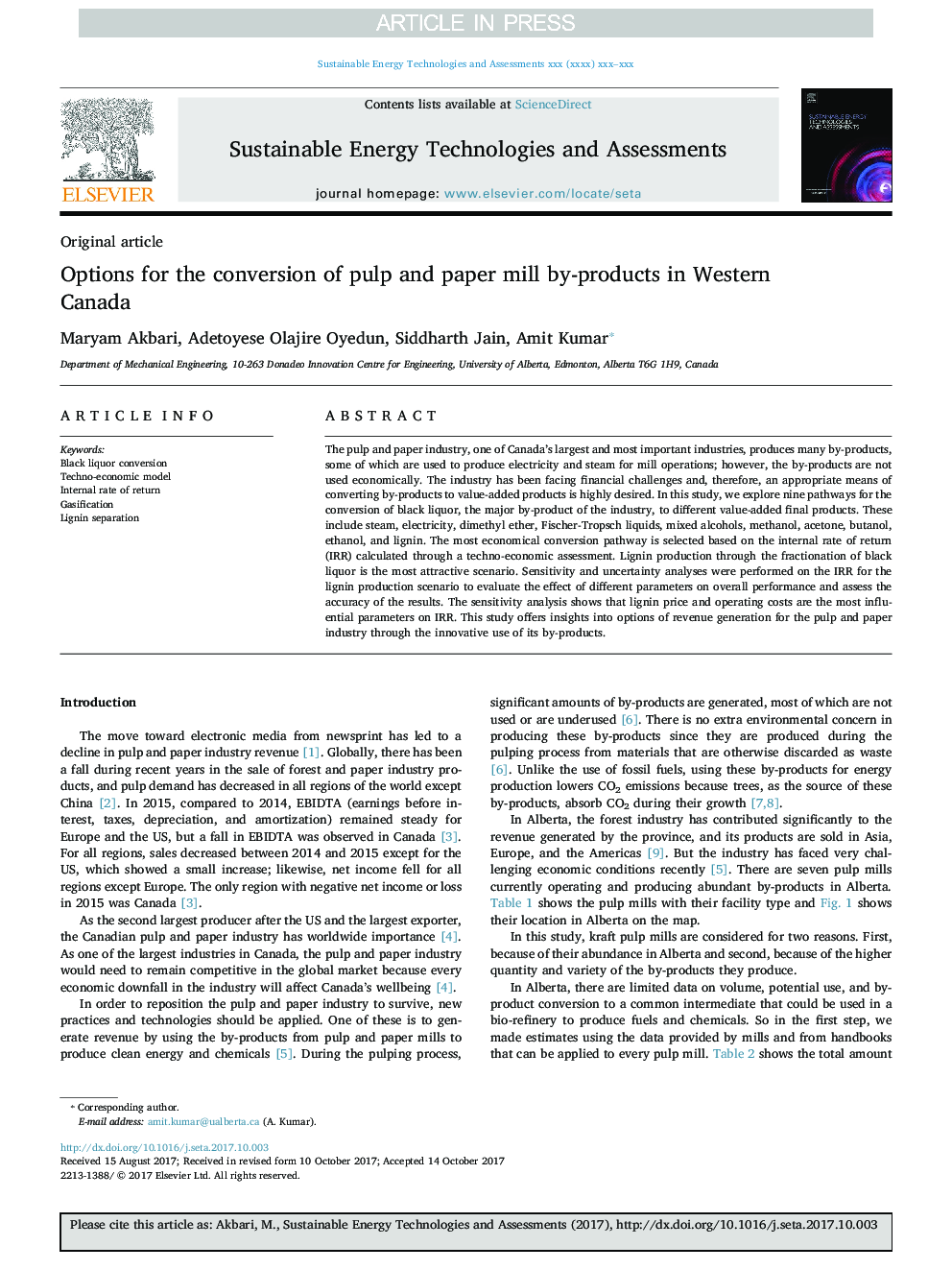| Article ID | Journal | Published Year | Pages | File Type |
|---|---|---|---|---|
| 8122726 | Sustainable Energy Technologies and Assessments | 2018 | 10 Pages |
Abstract
The pulp and paper industry, one of Canada's largest and most important industries, produces many by-products, some of which are used to produce electricity and steam for mill operations; however, the by-products are not used economically. The industry has been facing financial challenges and, therefore, an appropriate means of converting by-products to value-added products is highly desired. In this study, we explore nine pathways for the conversion of black liquor, the major by-product of the industry, to different value-added final products. These include steam, electricity, dimethyl ether, Fischer-Tropsch liquids, mixed alcohols, methanol, acetone, butanol, ethanol, and lignin. The most economical conversion pathway is selected based on the internal rate of return (IRR) calculated through a techno-economic assessment. Lignin production through the fractionation of black liquor is the most attractive scenario. Sensitivity and uncertainty analyses were performed on the IRR for the lignin production scenario to evaluate the effect of different parameters on overall performance and assess the accuracy of the results. The sensitivity analysis shows that lignin price and operating costs are the most influential parameters on IRR. This study offers insights into options of revenue generation for the pulp and paper industry through the innovative use of its by-products.
Related Topics
Physical Sciences and Engineering
Energy
Energy Engineering and Power Technology
Authors
Maryam Akbari, Adetoyese Olajire Oyedun, Siddharth Jain, Amit Kumar,
